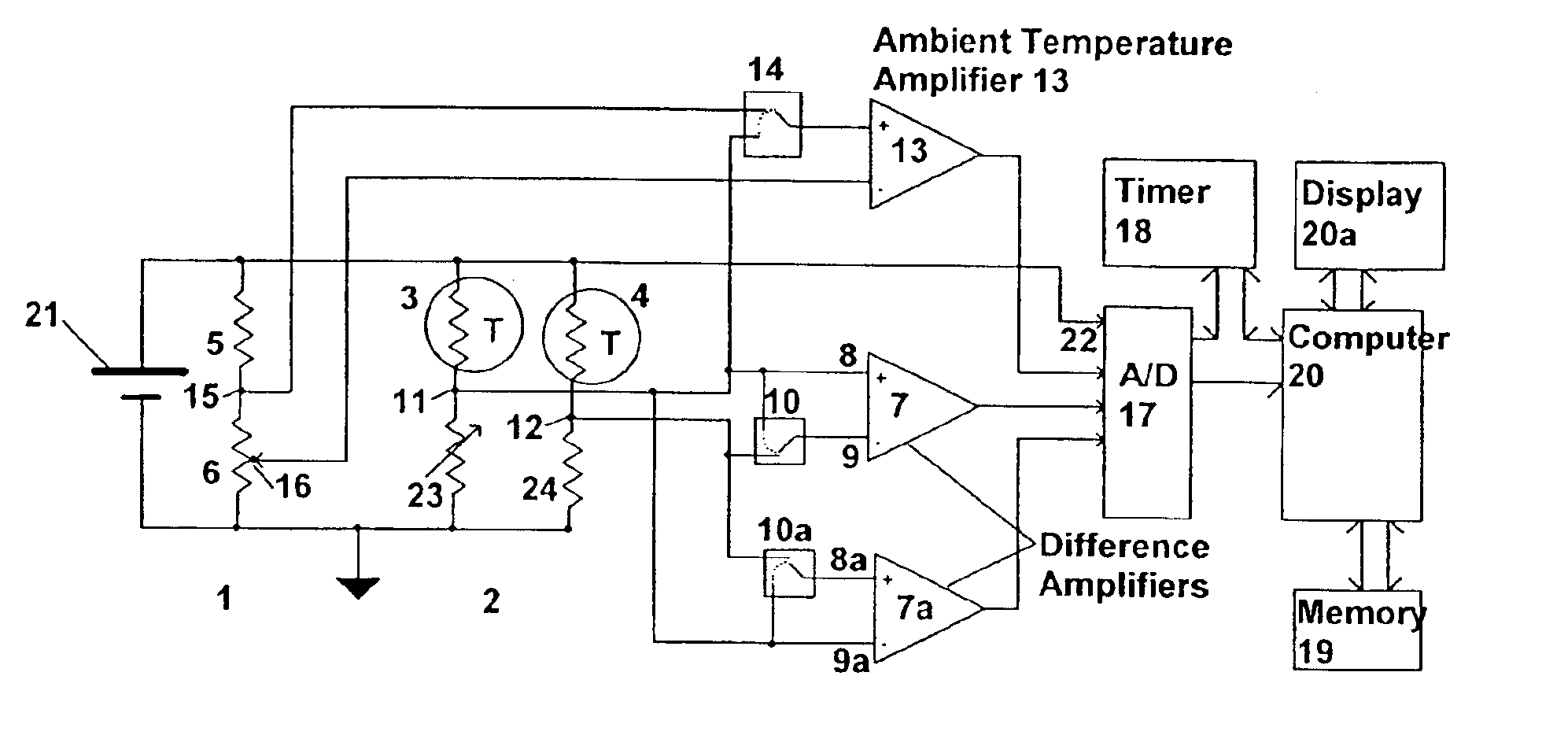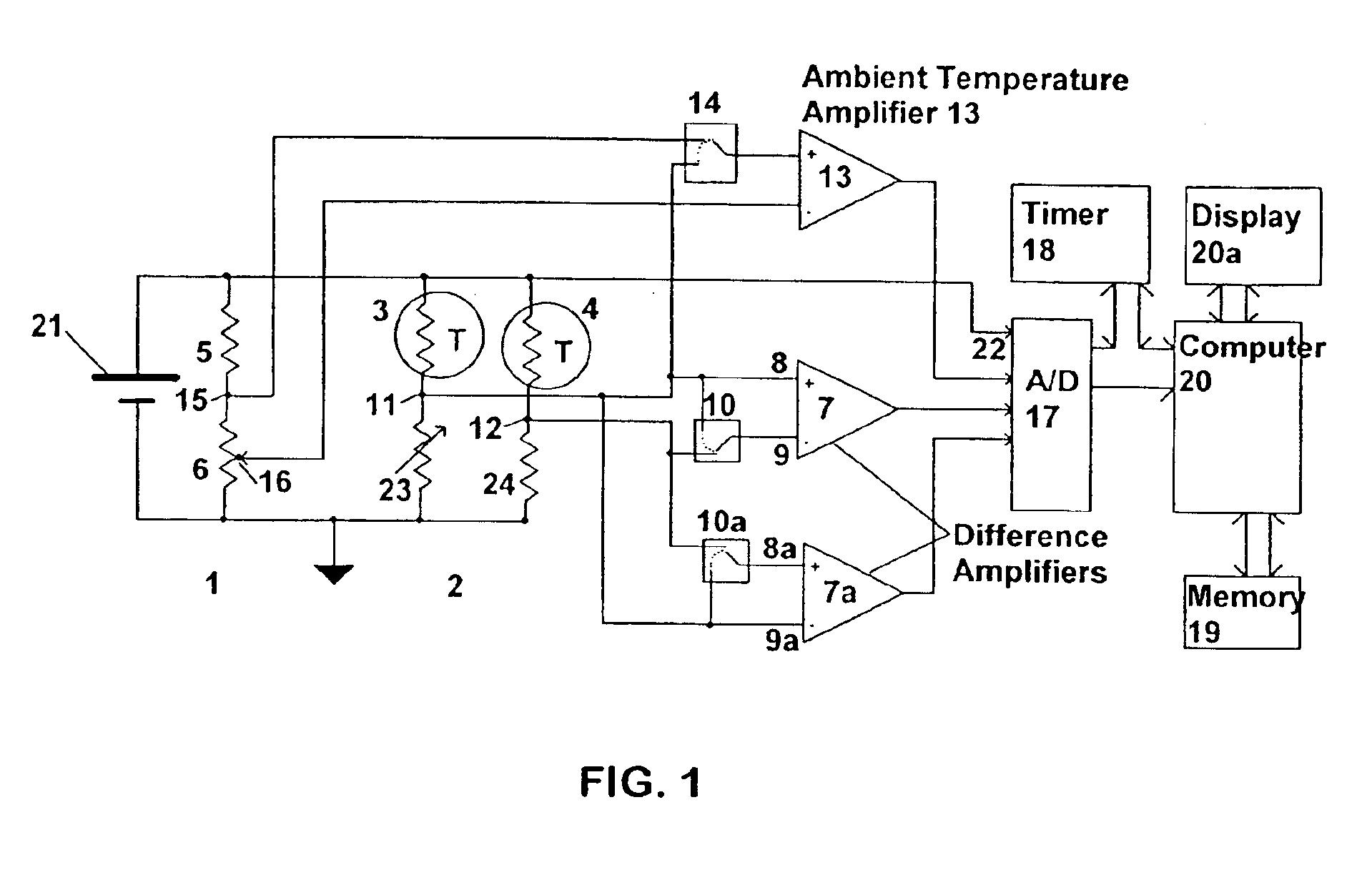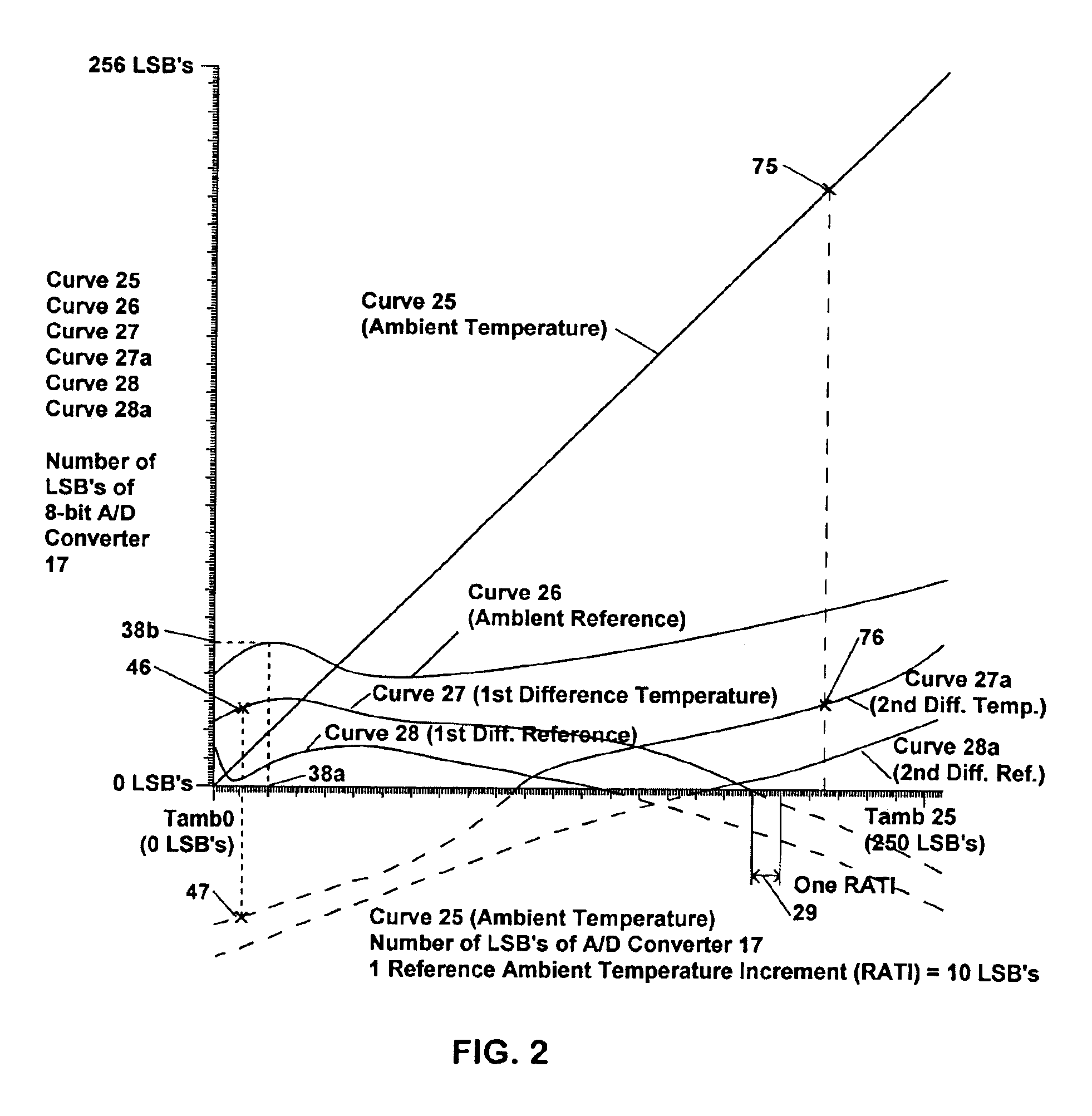It is known in the art that active and passive electronic components in such systems are subject to time and temperature drift, and that under normal operating conditions, the amplitude of time and temperature component drift is typically much greater than the amplitude of other inaccuracies generated by system components, such as
amplifier noise voltage,
noise current, and
resistor noise.
While such hardware compensation systems provide some compensation for thermal drift inaccuracies, they do not compensate for component drift over time, particularly the drift of sensors, such as thermistors.
Additionally, such hardware based compensation techniques do not readily compensate for component drift, resulting from the combined
time drift characteristics of multiple system components, located at different parts of the system, with different thermal drift characteristics, and subject to non-uniform aging.
In any case, the ability of the above hardware based compensation systems and techniques to compensate for system thermal drift are limited by the extent to which the particular technique tracks with thermal drift of the overall system, over time and temperature.
Consequently, such techniques would not provide sufficient compensation for component time and temperature drift to permit differential temperature measurements, with resolution on the order of micro-degrees centigrade, if these techniques were applied to that purpose.
The required precision analog components in these systems results in increased cost, complexity, and
power consumption.
Moreover, these systems do not compensate for time drift of passive components, such as thermistors, which would be sufficient to preclude
temperature difference measurements, with resolution on the order of micro-degrees centigrade, if these systems were applied to that purpose.
The prior art measurement systems, which utilize a computer, can provide time and temperature compensation based only upon the most recent reference calibration data, the acquisition of which requires that the system be cycled through an entire temperature range, and is sufficiently
time consuming to prevent, or significantly interrupt, normal system operation.
), as well as in U.S. Pat. No. 4,464,725 (Briefer, referred to above), require the use of a time and temperature stable reference
signal, which increases cost, complexity, and
power consumption.
U.S. Pat. No. 4,959,804 (Willing) utilizes time and temperature stable passive components, which, even with costly bulk
metal foil, or wirewound, resistors, would not provide the accuracy necessary in
temperature difference measurements, with resolution on the order of micro-degrees centigrade, if this technique were applied to that purpose.
Such time and temperature stable bulk
metal foil resistors (e.g., manufactured by Vishay
Electronics Foil Resistors, of Malvern, Pa.) and wirewound resistors, such as manufactured by Dale
Electronics, of Norfolk, Nebr., are one to two orders of magnitude more expensive than standard
metal film resistors, which provide comparable time stability, but are not nearly as temperature stable.
U.S. Pat. No. 4,651,292 (Jeenicke) relies on updating a point on a measurement curve, requiring, however, the restriction that the sensor curve characteristic be linear (not the case with temperature sensors, such as thermistors, and not sufficiently so, to provide resolution on the order of micro-degrees centigrade, even with known
thermistor linearization techniques) and that ambient temperature measurements not drift with time, to the extent that measurement accuracy would be affected, making this technique unsuitable for a differential
thermometer with resolution on the order of micro-degrees centigrade, if such a technique were to be applied to that purpose.
The above approaches, as they would relate to a temperature difference measurement system, utilizing a pair of thermistors, do not provide a means to compensate for this effect.
Additionally, in order to minimize common mode
amplifier error, the use of bipolar power to the measurement bridge is often preferred in the above prior art, as are high precision amplifiers, which typically require bipolar power, resulting in added cost and complexity, compared to a single-ended power supply architecture.
Additionally, no means is provided to compensate for time drift of thermistors, which typically amounts to ten or more milli-degrees / year (e.g., YSI 44018, manufactured by YSI Incorporated, of Yellow Springs, Ohio), a significant figure in temperature difference measurements, intended to approach micro-degree centigrade resolution.
In cases where temperature difference measurements on the order of micro-degrees centigrade are to be resolved, this powering down and then powering up of the bridge, until the thermistors are within micro-degrees centigrade of equilibrium, adds significant time to the calibration process.
Calibration measurements performed before and after a measurement run can conceivably be used to interpolate linear changes in ambient temperature with time, during a measurement run, but this places an unrealistic limitation on a measurement system which desirably operates under normal atmospheric conditions, in which ambient temperature changes may not be linear with time.
Therefore, a calibration measurement must be undertaken for each temperature difference measurement, in which ambient temperature may not have undergone a linear change, thus adding significant time to the measurement process.
Similarly, U.S. Pat. No. 5,351,010 (Leopold et al., also mentioned above) requires that current be reversed through zero, in
resistive sensors, for each calibration, as well as requiring precision circuitry, that increases cost, complexity, and power consumption.
Additionally, the prior art does not provide a means to dynamically quantify compensation inaccuracies, resulting from the particular drift compensation technique used.
An additional source of error to take into consideration, in devices expected to perform to specification when they are turned on, includes time versus drift behavior during system warm-up.
 Login to View More
Login to View More 


